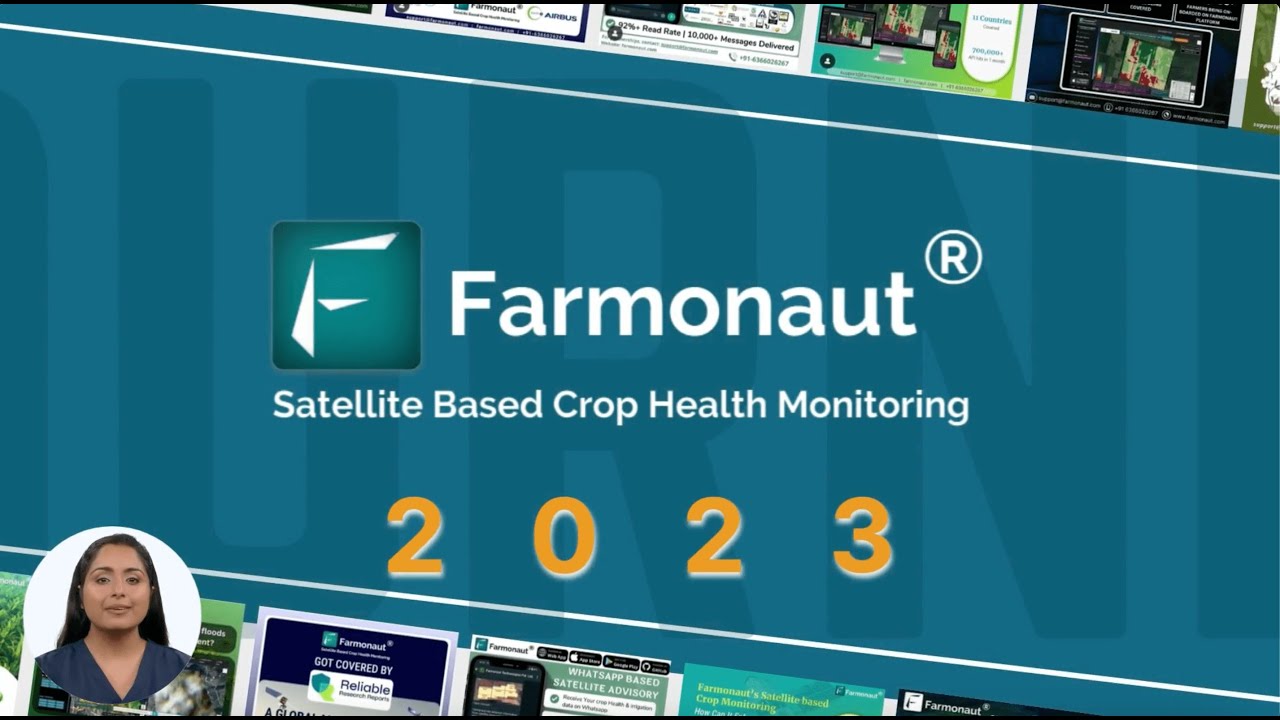Empowering Tribal Agriculture: USDA Invests $5M in Education and Workforce Development for Sustainable Farming
“USDA’s $5 million grant aims to improve retention and graduation rates of Tribal students in land-grant colleges and universities.”
We are excited to share groundbreaking news that promises to reshape the landscape of tribal agriculture programs and agricultural education opportunities. The United States Department of Agriculture (USDA) has taken a significant step towards empowering Native American communities and fostering sustainable farming practices through a substantial investment in education and workforce development.

On November 15, 2024, U.S. Secretary of Agriculture Tom Vilsack announced a remarkable $5 million grant allocation through the New Beginning for Tribal Students (NBTS) Program. This investment underscores the USDA’s unwavering commitment to promoting equity, removing barriers, and bolstering agricultural workforce development within Tribal Nations.
The USDA 1994 Tribal Scholars Program: Nurturing Future Agricultural Leaders
At the heart of this initiative lies the USDA 1994 Tribal Scholars Program, a comprehensive scholarship opportunity designed to support Tribal students pursuing degrees in agriculture and related fields at Tribal colleges and universities (TCUs). This program goes beyond mere financial assistance; it offers a holistic approach to education and career development.
- Full Tuition Coverage: The program covers all tuition and fees for eligible students.
- Paid Workforce Training: Scholars receive hands-on experience through paid internships.
- Year-Round Support: Financial assistance continues until graduation.
- Career Pathway: Upon fulfilling scholarship requirements, recipients may become permanent USDA employees.
This comprehensive support system not only alleviates the financial burden of higher education but also paves a clear path for Tribal students to enter the agricultural sector and make meaningful contributions to their communities.
Terra Preta do Indio Tribal Fellowship Program: Enhancing Research Capabilities
In addition to supporting students, the USDA has introduced the innovative Terra Preta do Indio Tribal Fellowship Program. This initiative aims to enhance research capabilities among Tribal college faculty, fostering a culture of academic excellence and innovation in agricultural sciences.
- Collaborative Research: Fellows work alongside USDA researchers on cutting-edge projects.
- Hands-On Experience: Participants gain practical skills and knowledge in agricultural research methodologies.
- Knowledge Transfer: Fellows apply their new insights to benefit their home institutions.
- Networking Opportunities: An immersive week in Washington, D.C. fosters valuable partnerships.
Scheduled for Summer 2025, this program promises to be a catalyst for advancing indigenous agricultural knowledge and sustainable farming practices within Tribal communities.

Celebrating 30 Years of Tribal Colleges in the Land-Grant Network
“Tribal colleges in the land-grant network serve over 15,000 students annually, celebrating 30 years of membership in 2024.”
As we reflect on these groundbreaking initiatives, it’s crucial to acknowledge the significant milestone that Tribal colleges are celebrating in 2024 – 30 years of membership in the land-grant network. This anniversary underscores the vital role these institutions play in serving Tribal communities and preserving indigenous knowledge.
- 36 Federally Recognized TCUs: Serving over 15,000 students annually.
- Community Impact: Reaching more than 120,000 community members each year.
- Comprehensive Services: Offering job training, college preparatory courses, and community engagement programs.
- Cultural Preservation: Embedding Native American history and indigenous knowledge in curricula.
The impact of these institutions extends far beyond the classroom, playing a crucial role in preserving cultural heritage while equipping students with the skills needed to thrive in modern agriculture.
Transforming the U.S. Food System: A Commitment to Resilience and Equity
These investments in tribal agriculture programs and agricultural education opportunities are part of a broader initiative by the Biden-Harris Administration to transform the U.S. food system. The focus is on building resilience, promoting equity, and ensuring access to nutritious food for all Americans.
By investing in education and workforce development for Tribal students, the USDA is taking concrete steps to create more inclusive agricultural sector representation and empower future leaders in the field. This approach not only benefits Tribal communities but also contributes to the overall strength and diversity of American agriculture.
The Role of Technology in Advancing Tribal Agriculture
As we celebrate these investments in education and research, it’s important to recognize the role that technology plays in modernizing and enhancing agricultural practices. Innovative platforms like Farmonaut are at the forefront of this technological revolution, offering advanced satellite-based farm management solutions that can significantly benefit Tribal farmers and agricultural programs.
Farmonaut’s suite of tools, including real-time crop health monitoring, AI-based advisory systems, and resource management tools, can complement the educational initiatives by providing practical, cutting-edge solutions for sustainable farming. By integrating such technologies into agricultural education and research programs, Tribal students and faculty can gain hands-on experience with the latest advancements in precision agriculture.
To explore how Farmonaut’s solutions can enhance your agricultural practices, visit their web application or download their mobile apps:
Empowering Tribal Agriculture Through Education and Innovation
The USDA’s investment in Tribal agricultural education and workforce development marks a significant step towards empowering Native American communities and promoting sustainable farming practices. By combining traditional knowledge with modern education and cutting-edge technology, we can create a more resilient, equitable, and productive agricultural sector.
As we move forward, it’s crucial to continue supporting these initiatives and exploring innovative ways to enhance agricultural practices. The integration of advanced technologies, such as those offered by Farmonaut, can play a vital role in this transformation, providing Tribal farmers with the tools they need to thrive in an ever-changing agricultural landscape.
USDA Tribal Agriculture Investment Programs Comparison
| Program Name | Target Audience | Funding Amount | Key Benefits |
|---|---|---|---|
| New Beginning for Tribal Students Program | Land-grant colleges and universities | $5 million (total grant) | Improved retention and graduation rates for Tribal students |
| USDA 1994 Tribal Scholars Program | High school seniors, current TCU students, recent graduates | Full tuition coverage | Comprehensive financial support, paid internships, potential USDA employment |
| Terra Preta do Indio Tribal Fellowship Program | Tribal college faculty | Research funding and support | Enhanced research capabilities, collaboration with USDA researchers, knowledge transfer |
The Future of Tribal Agriculture: Blending Tradition with Innovation
As we look to the future of tribal agriculture, it’s clear that success lies in striking a balance between preserving traditional practices and embracing innovative technologies. The USDA’s investments in education and workforce development provide a strong foundation, but it’s up to the agricultural community as a whole to build upon this momentum.
Integrating advanced agricultural technologies, like those offered by Farmonaut, into tribal farming practices can help bridge the gap between traditional knowledge and modern techniques. For instance, Farmonaut’s satellite-based crop health monitoring can complement traditional observational methods, providing data-driven insights to support decision-making.
To learn more about how Farmonaut’s API can be integrated into agricultural research and education programs, visit their API documentation.
Sustainable Farming Practices: A Key Focus for Tribal Agriculture
One of the critical aspects of the USDA’s investment in tribal agriculture programs is the emphasis on sustainable farming practices. This focus aligns perfectly with many traditional Native American agricultural methods, which have long prioritized environmental stewardship and resource conservation.
- Water Conservation: Implementing efficient irrigation systems and drought-resistant crops.
- Soil Health: Promoting practices like crop rotation and cover cropping to maintain soil fertility.
- Biodiversity: Encouraging the cultivation of diverse, native plant species.
- Climate Resilience: Developing strategies to adapt to changing climate conditions.
By incorporating these sustainable practices into agricultural education and research programs, the USDA is helping to ensure that tribal agriculture remains resilient and productive for generations to come.
Creating Agricultural Career Pathways for Tribal Youth
One of the most exciting aspects of the USDA’s investment is the creation of clear agricultural career pathways for tribal youth. By providing comprehensive support from high school through college and into the workforce, these programs are opening doors to a wide range of opportunities in the agricultural sector.
- Mentorship Programs: Connecting students with experienced professionals in the field.
- Internship Opportunities: Providing hands-on experience in various agricultural disciplines.
- Entrepreneurship Support: Encouraging students to develop innovative agricultural businesses.
- Leadership Development: Fostering the next generation of agricultural leaders within tribal communities.
These pathways not only benefit individual students but also contribute to the overall economic development and food sovereignty of tribal nations.
The Role of Technology in Enhancing Agricultural Education
As we embrace these new educational opportunities, it’s important to recognize the role that technology plays in modern agricultural education. Platforms like Farmonaut can serve as valuable educational tools, providing students with hands-on experience in using cutting-edge agricultural technologies.
For educators and researchers interested in incorporating Farmonaut’s technology into their curriculum or research projects, detailed information is available in their API Developer Documentation.
Fostering Collaboration Between Tribal Colleges and Land-Grant Universities
The USDA’s investment also highlights the importance of collaboration between tribal colleges and traditional land-grant universities. This partnership can lead to:
- Knowledge Exchange: Sharing of best practices and research findings.
- Resource Sharing: Access to advanced research facilities and equipment.
- Joint Research Projects: Collaborative studies on pressing agricultural issues.
- Cultural Exchange: Promoting understanding and respect for indigenous agricultural practices.
By fostering these collaborations, we can create a more inclusive and diverse agricultural research community, benefiting both tribal and non-tribal institutions.
The Impact on Food System Transformation
The USDA’s investment in tribal agriculture education and workforce development is part of a larger effort to transform the U.S. food system. By empowering tribal communities with the knowledge and skills to implement sustainable farming practices, we’re taking a significant step towards:
- Improving Food Security: Increasing local food production in tribal areas.
- Enhancing Nutrition: Promoting the cultivation of traditional, nutrient-rich crops.
- Supporting Local Economies: Creating jobs and economic opportunities in tribal communities.
- Preserving Cultural Heritage: Maintaining traditional agricultural practices alongside modern techniques.
This holistic approach to food system transformation recognizes the unique contributions that tribal communities can make to the broader agricultural landscape.
Conclusion: A Bright Future for Tribal Agriculture
The USDA’s $5 million investment in tribal agriculture programs and agricultural education opportunities marks a significant milestone in the journey towards a more equitable and sustainable agricultural sector. By providing comprehensive support for education, research, and workforce development, these initiatives are laying the groundwork for a new generation of tribal agricultural professionals.
As we move forward, it’s crucial that we continue to support these programs and explore innovative ways to enhance agricultural practices in tribal communities. The integration of advanced technologies, such as those offered by Farmonaut, alongside traditional knowledge can create a powerful synergy, driving progress and sustainability in tribal agriculture.
We encourage all stakeholders – students, educators, researchers, and community leaders – to engage with these opportunities and contribute to the ongoing transformation of tribal agriculture. Together, we can build a more resilient, equitable, and productive agricultural future for tribal nations and beyond.
FAQ Section
Q: Who is eligible for the USDA 1994 Tribal Scholars Program?
A: The program is open to high school seniors, current TCU students, and recent graduates pursuing degrees in agriculture and related fields at Tribal colleges and universities.
Q: What does the Terra Preta do Indio Tribal Fellowship Program offer?
A: This program offers Tribal college faculty the opportunity to enhance their research capabilities through collaboration with USDA researchers, including hands-on experience and training.
Q: How much funding has the USDA allocated for the New Beginning for Tribal Students Program?
A: The USDA has allocated a $5 million grant for the New Beginning for Tribal Students Program.
Q: What is the significance of Tribal colleges joining the land-grant network?
A: Tribal colleges joining the land-grant network 30 years ago has allowed them to serve over 15,000 students and 120,000 community members annually, offering essential services and preserving Native American culture in education.
Q: How can technology like Farmonaut benefit Tribal agriculture?
A: Platforms like Farmonaut offer advanced satellite-based farm management solutions that can complement educational initiatives by providing practical, cutting-edge tools for sustainable farming practices.



















